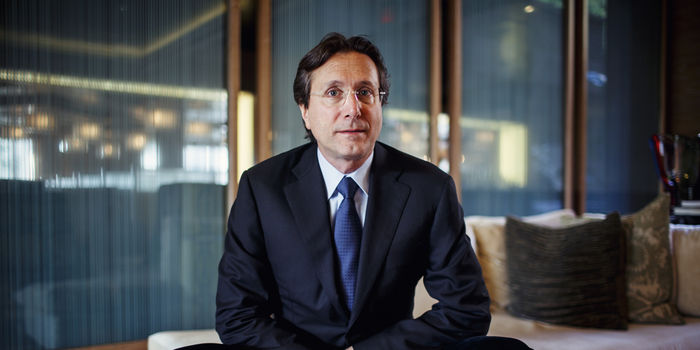Bruce Berkowitz, the legendary value investor and founder of Fairholme Capital Management, has long been known for his deep conviction, concentrated positions, and unorthodox strategy. While many fund managers diversify across dozens (if not hundreds) of securities, Berkowitz doubles down on a few names he believes offer outsized risk-reward potential.
As of March 31, 2025, Fairholme Capital’s 13F filing paints a familiar picture: highly concentrated, value-oriented, and anchored in a few core holdings. But beneath that simple headline lies a nuanced portfolio strategy—one that can teach both professional and retail investors a great deal about valuation, patience, and the power of strategic focus.
In this article, we’ll break down the holdings, examine the underlying investment logic, and explore how modern tools like AI stock analysis and machine learning in investing—particularly through platforms like Sagehood—can help retail investors approach the market like pros.
The Big Picture: A Portfolio Built on Conviction
As of Q1 2025, Fairholme Capital Management reported $1.215 billion in U.S.-listed public equities, spread across just 12 positions. This reflects Bruce Berkowitz’s long-standing strategy of managing a lean, high-conviction portfolio.
The top five holdings alone account for over 99% of the portfolio’s value, with one stock—The St. Joe Company—comprising more than 78%.
| Ticker | Company | % of Portfolio |
|---|---|---|
| JOE | The St. Joe Company | 78.07% |
| EPD | Enterprise Products Partners | 15.31% |
| OZK | Bank OZK | 2.26% |
| BRK.B | Berkshire Hathaway (Class B) | 2.14% |
| WRB | W. R. Berkley Corp | 1.53% |
1. The St. Joe Company (JOE) – The Anchor
What it is:
St. Joe is a real estate development firm focused on the Florida Panhandle, with operations in residential communities, resorts, and commercial assets.
Why Berkowitz loves it:
Berkowitz has been bullish on Florida for years, and JOE represents a pure-play bet on that optimism. The company owns vast tracts of land, much of which is undervalued on the balance sheet. As development picks up and infrastructure expands in the region, Berkowitz expects the company’s asset base to unlock tremendous value.
Key metrics:
- Land-rich balance sheet with low-cost basis
- Strong cash generation from hospitality and leasing
- Tailwinds from Florida’s population growth
How AI can help:
For investors using AI investing tools like Sagehood, a stock like JOE would likely trigger deeper questions. Is the stock truly undervalued relative to its land holdings? What does cash flow reveal about near-term solvency vs. long-term optionality? Sagehood’s Valuation AI Agent is particularly useful here—it can model asset-based valuation, monitor margin expansion potential, and contrast public valuation with private land comps.
2. Enterprise Products Partners (EPD) – The Income Machine
What it is:
A leading U.S. midstream energy company, EPD owns pipelines, storage terminals, and processing facilities. Its business is integral to the flow of oil, NGLs, and natural gas across North America.
Berkowitz’s angle:
In an era of rising rates and market uncertainty, stable cash flow and high distributions are key. EPD offers both. With a yield north of 7%, strong distributable cash flow, and a conservative payout ratio, it serves as a ballast in the Fairholme portfolio.
Key metrics:
- Yield: ~7.2% (2025 estimates)
- Debt/EBITDA: 3.2x — considered conservative for the sector
- Long history of distribution growth
What AI can reveal:
AI-powered stock picks aren’t just about growth stories. AI agents trained on income metrics can identify which yield stocks are actually sustainable. Sagehood’s Financial Health Agent evaluates leverage, distribution coverage, and sensitivity to commodity cycles—helping investors determine whether a yield is attractive or a trap.
3. Bank OZK (OZK) – Regional Bank with a Twist
What it is:
A regional bank based in Arkansas with a unique real estate-focused lending model, especially in commercial construction.
Why it’s in the portfolio:
Berkowitz appears to see OZK as a lean, well-managed bank with specialized expertise in construction lending. Its niche strategy has outperformed peers in terms of margin and return on assets.
Risks:
- Heavy exposure to real estate development in a potentially cooling macro environment
- Narrow focus relative to diversified banks
Where AI comes in:
AI trading platforms can help investors monitor sector exposure and macro sensitivities. Using Sagehood, users can analyze the correlation between Bank OZK’s performance and regional real estate cycles, assess non-performing loan trends, and benchmark return on equity vs. peers—all without needing to open a single 10-K manually.
4. Berkshire Hathaway (BRK.B) – The Oracle’s Safety Net
The rationale:
Even value investors hedge. Berkshire Hathaway is often treated as a “fund of funds” for value investing—an indirect way to gain diversified exposure to high-quality operating businesses, financials, and a large public equity portfolio.
At only 2.14% of the portfolio, BRK.B is a minor holding, but its presence is notable. Berkowitz has always respected Buffett’s discipline and long-term thinking—values that align with Fairholme’s DNA.
A modern twist:
For new investors trying to reverse-engineer value investing, platforms like Sagehood offer real-time breakdowns of Berkshire’s underlying stock positions. Investors can track changes in BRK’s equity portfolio, run valuation models on the top holdings, and use AI stock analysis to identify overlap with their own strategies.
5. W. R. Berkley (WRB) – Quiet Compounder
Overview:
W. R. Berkley is a property and casualty insurer that specializes in niche segments, often flying under Wall Street’s radar. With a reputation for underwriting discipline and long-term capital efficiency, it’s a classic “sleep-well-at-night” stock.
Investment thesis:
- High return on equity
- Conservative underwriting
- Exposure to favorable pricing cycles in commercial insurance
This position aligns with Berkowitz’s philosophy: find companies with long-term tailwinds, prudent management, and asymmetric risk/reward.
Tracking the Others: Smaller Positions, Subtle Signals
Fairholme’s remaining seven positions are small in size but still strategic. These include:
- Occidental Petroleum (OXY) – A modest energy bet
- Energy Transfer LP (ET) – Another midstream holding
- Imperial Metals (IPMLF) – A micro-cap metals bet
- Others include U.S. regional banks, insurance firms, and hard asset plays
Together, these positions account for less than 1% of the portfolio each. While small, they offer insight into the themes Berkowitz is watching: energy infrastructure, real assets, and financial strength.
Why This Strategy Still Matters in 2025
In an age of quantitative strategies, meme stocks, and algorithmic trading, Bruce Berkowitz’s strategy feels almost quaint. But it’s precisely this old-school discipline—combined with new-school tools—that makes his approach so relevant.
His portfolio reflects a few key principles:
- Concentration wins when you’re right
- Valuation still matters
- Cash flow beats hype
- You don’t need to chase trends to outperform
For modern investors, the challenge is: how do you emulate this rigor without spending hours in spreadsheets?
That’s where AI investing tools become indispensable. Platforms like Sagehood bridge the gap—offering machine learning in investing without overwhelming users. Whether you’re analyzing income stability, margin expansion, or downside risk, Sagehood AI agents help surface real-time insights that align with long-term strategies like Berkowitz’s.
Lessons for Retail Investors
If you’re managing your own portfolio and looking to apply some of these principles, here are a few practical takeaways:
1. Focus on Free Cash Flow and Valuation
Don’t just chase earnings per share. Use tools like Sagehood to analyze free cash flow generation, capital allocation efficiency, and valuation multiples adjusted for sector trends.
2. Follow the Concentrated Conviction Strategy
More isn’t always better. Build a high-conviction portfolio using AI-powered stock picks filtered through financial health, valuation quality, and market sentiment divergence.
3. Watch Sector Rotation and Macro Signals
Tools like Sagehood’s macro overlay help investors understand when energy, real estate, or financials may outperform. Berkowitz’s portfolio is tilted toward these sectors for a reason.
4. Let AI Read the Market for You
Berkowitz reads balance sheets. Sagehood AI agents read thousands per second—surfacing anomalies, undervalued gems, or overhyped duds based on real data, not just narratives.
Final Thoughts
Bruce Berkowitz’s 2025 portfolio shows that value investing is not dead—it’s just evolved. While many chase momentum and market fads, Berkowitz remains committed to deep fundamentals, long-term thinking, and concentrated risk.
With modern platforms like Sagehood, retail investors can access the same strategic edge: from AI stock analysis to automated sentiment filters, the gap between amateur and professional has never been smaller.
Whether you’re building a dividend portfolio, hunting for value traps, or identifying compounders before Wall Street does, remember: it’s not about how many stocks you hold—it’s about how well you understand them.
And today, with artificial intelligence in finance, you don’t have to do it alone.


